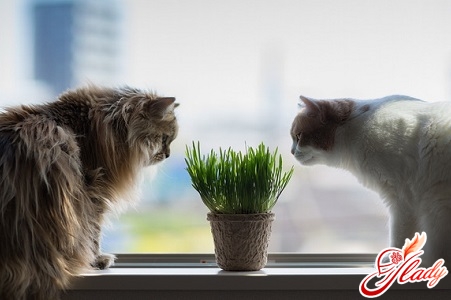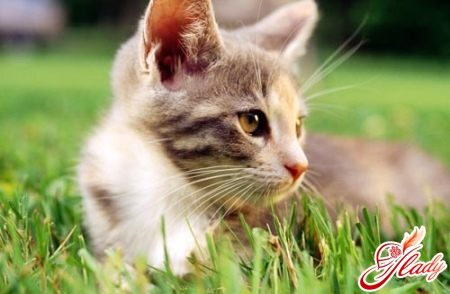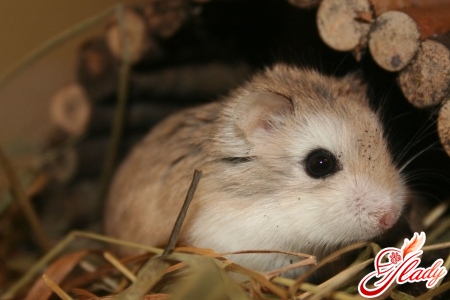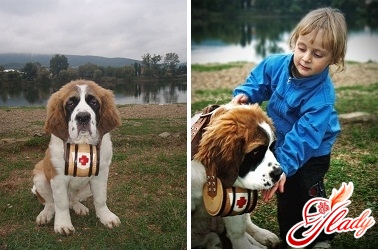 Serious thoughtful look, chicshimmering fur, a lazy gait - you must admit, a very aristocratic appearance. However, in case of danger, the true essence of the Neapolitan Mastiff is revealed - a fighting dog, a gladiator dog. If the Mastiff, his home or his family are in danger, he becomes collected, tense and ready for an irresistible attack. That's when you understand how strong and courageous this dog is and you can truly appreciate all its power. Probably, not so much for its attractive appearance, but for the gladiatorial qualities of character, combined with calmness and equanimity, mastiffs are so loved in all countries. Where did this extraordinary dog with the gait of a lion and the eyes of a philosopher come from? What is its history, what character is hidden behind the apparent phlegmatic nature? What is it attractive for and what "feats" is it capable of?
Serious thoughtful look, chicshimmering fur, a lazy gait - you must admit, a very aristocratic appearance. However, in case of danger, the true essence of the Neapolitan Mastiff is revealed - a fighting dog, a gladiator dog. If the Mastiff, his home or his family are in danger, he becomes collected, tense and ready for an irresistible attack. That's when you understand how strong and courageous this dog is and you can truly appreciate all its power. Probably, not so much for its attractive appearance, but for the gladiatorial qualities of character, combined with calmness and equanimity, mastiffs are so loved in all countries. Where did this extraordinary dog with the gait of a lion and the eyes of a philosopher come from? What is its history, what character is hidden behind the apparent phlegmatic nature? What is it attractive for and what "feats" is it capable of?
Origin of the Gladiator Dog
Neapolitan Mastiffs (like all others)descended from the Tibetan mastiff, whose descendants appeared in Europe in 300 BC. According to other sources, these dogs were brought to Britain by the Phoenicians in 500 BC. But be that as it may, the Neapolitan mastiff traces its history back to the times of the Roman Empire, where it performed in gladiator fights with bears and lions. It is unknown for what reasons these unusual dogs disappeared from Europe for a long time, but survived in the Naples area. And that is why they received the name Neapolitan mastiff. As for the official recognition of the breed, this happened only in 1946. Although as a breed, the Neapolitan mastiff was described back in 1897 by Professor Signor Tezze from Naples. We owe the preservation of the Neapolitan Mastiff breed (long unrecognized) to the Italian dog breeder Piero Scanziani, who is rightly called the "father" of this dog breed. Scanziani managed to acquire a couple of dogs for breeding, and it was he who not only saved the breed from extinction, but also achieved its official recognition by the international cynological community.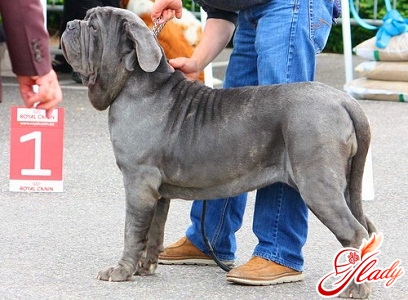
The appearance of a dog-gladiator
These are very beautiful, harmonious and powerful dogs.Strong or even coarse build. Adult males reach seventy-five centimeters at the withers and weigh eighty kilograms. Females are, of course, somewhat smaller, but also surprise with their power (up to 70 cm at the withers and 65 kilograms). The mastino has a very massive head (three tenths of the height at the withers) with a wide and deep muzzle, powerful jaw and fleshy lips. A distinctive feature of the mastino's appearance is a pronounced dewlap - abundant "extra" skin with wrinkles, which descends in folds from the outer corners of the eyes and falls onto the neck. The coat is short with a glossy shine. The most common color is lead, but there are also dogs of brindle, black, red, gray and fawn colors. The nose should be the same color as the coat. According to breed standards, these dogs have short cropped ears and a third of the tail. The Mastino's legs are also strong and proportionate to its height, with long paws (metatarsus). Due to the special structure of its paws, the Mastino's gait is also special. These dogs are distinguished by a unique lion-like gait with slow movements reminiscent of a bear's gait.
Character of the dog-gladiator
The Mastiff is naturally firm, if notsay "tough" character. At first glance, it seems phlegmatic and overly calm. Mastino will never express joy violently, will not demonstrate its devotion, and even in an embittered state, this dog remains outwardly calm and silent. However, one should not confuse the mastino's imperturbability with indifference, and innate pride - with stubbornness. Despite the delicacy and ostentatious arrogance, the mastino is very respectful of its owner and sincerely suffers even from a short separation from him. It is simply impossible to tell everything about the Neapolitan mastino - this dog is so amazing. Nevertheless, it is worth noting its unusually high intelligence and boundless devotion. Mastino will never leave his family in trouble and will not give in to danger - the fearlessness of a gladiator is in his blood. The owners of these dogs say that communicating with them is a real pleasure. If you pay enough attention to them and treat them with respect (yes, respect), then mastinos simply become a part of their owner, unmistakably guessing and adapting to his mood. In addition to their natural fearlessness, these dogs also have an innate ability to guard (they do not need to be specially trained for this either). But here's what's interesting: mastinos guard only their home and those who live in it. It is useless to try to make a bodyguard out of this dog - it will still only guard whoever it deems necessary. But the house... "Strangers" have no chance of getting into a house guarded by a mastino - the scout will be discovered and neutralized, and without unnecessary noise and fuss.
Raising a Gladiator's Dog
When training a mastiff, there is no need to strive"break" his character. You will not achieve complete submission anyway, and the dog will not tolerate such an attitude and will harbor a grudge and become unsociable. Raising a bodyguard out of her is also a thankless task. The mastino will selflessly guard the territory and will not hesitate to give his life for loved ones, but only when he considers it necessary. The main thing in relationships with these dogs is trust. They themselves trust their owners infinitely, but expect reciprocal trust. Mastino can respect the owner, but blindly obey - never! You can also not cultivate meekness or ferocity in this dog - it has a tough character by nature. Relationships "on equal terms" - only this way, only partnership, friendship and respect. This is the basis of proper education of the Neapolitan Mastiff. Amazing dog Mastino Neapolitano: you can talk about the breed endlessly. But it is best to get to know it in person. This is a devoted friend, a great guard, a reliable protector and an intellectual who demands respect. The Mastino feels great in a country house, but if the owner is able to take long walks with this dog at least twice a day, then it will be quite comfortable in an apartment. A calm, balanced gladiator dog has been living next to a person for two thousand years, protecting him and his home from enemies. This is his mission. We recommend reading:






